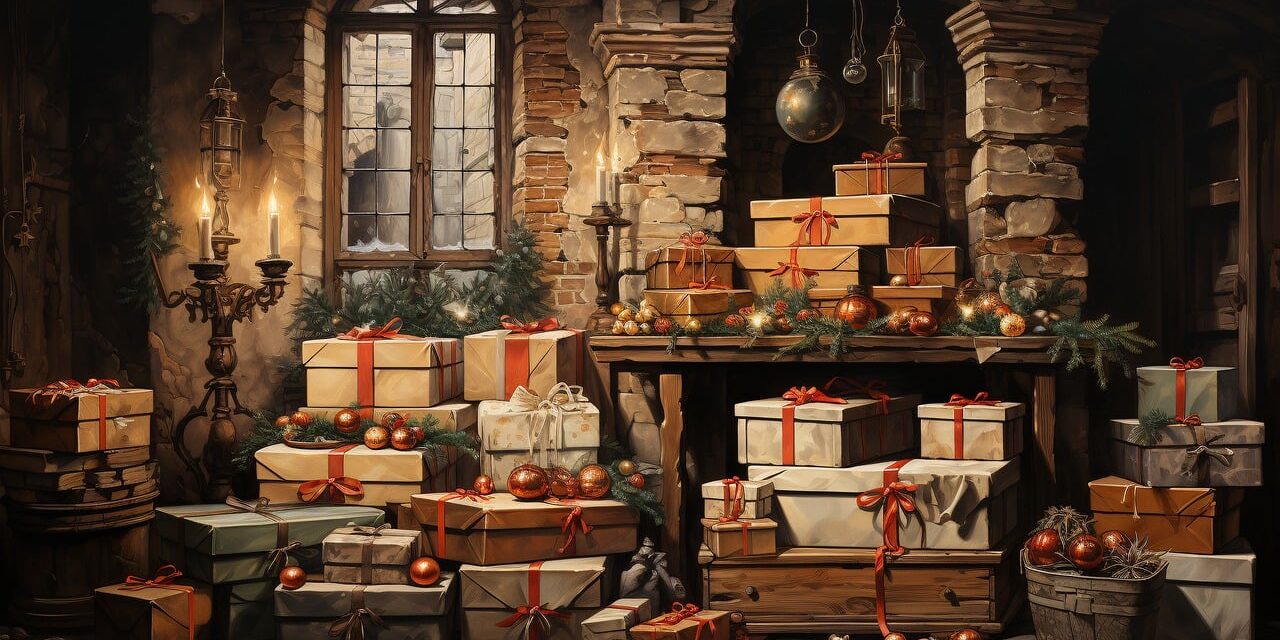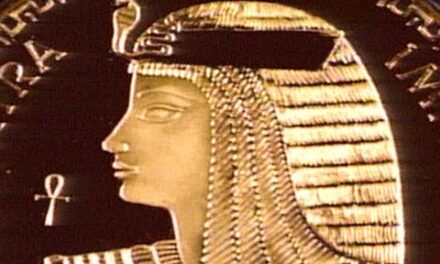The Christmas gift-giving customs of noble and noble families can be learned mainly from contemporary correspondence and later reports.
In one of the most beautiful castles in Transylvania, Count Mihály Teleki's castle in Gernyeszeg - which was not for nothing considered the "jewel of the Maros" - the children of the farm were gathered at Christmas and everyone received a present. Mihály Teleki testified about this:
"Our waggon driver, Andris, went out to the forest shepherd, they cut the tree he selected from the pine forest, he brought it in, and we set it up downstairs, in the laundry room. We brought a very nice tall tree, as tall as the laundry room. They put it in a plinth, by that time we had already prepared the decoration, figs, prunes, sugar cubes, walnuts, a doll for the boys, a doll for the girls came in baskets made of colorful and shiny paper, and so on. We hung the baskets on the tree and put many candles on it. The plum-flavored loaves were lined up on a long table, each child got one too. We went down nicely dressed, the children were brought from the major and the farm to the castle by oxcart or sleigh, and then there was a big gift-giving under the Christmas tree, every child up to the age of fifteen received a present... The priest came in, said a short prayer, and we sang a Christmas carol. song. I think the villagers liked "Sparkle, twinkle, shine above" the most."
Princess Margit Cziráky and IV. From the time of Miklós Esterházy, we can also read a book about the nobleman's Christmas customs of the time, which was published in London in 1901 under the title A Versailles Christmas-tide. We know exactly how much care Princess Margit paid to the Christmas preparations: even from her usual stay at the abbey, she arranged for her husband to choose the right tree in a letter. In aristocratic families, charity and distribution of donations were among women's duties, and there is no one among our old ladies who would not have gladly undertaken this. Princess Margit gave gifts not only to children, but also to the poor, old women and men unable to work, often not only with material donations, but also with money.
historian Attila Bánó's Old Hungarian families – today's fates, we can learn more about the Christmases of old from a late descendant of a noble family. The glitz and abundance that we think of as a natural part of castle Christmases did indeed exist, but also in the spiritual and spiritual sense of the word.
Christmas was about coming together, preparing together and the festive atmosphere created as a reward for working together.
In most places, they made the Christmas tree decorations themselves, and they also participated in decorating the interiors.
Countess Ilona Festetich remembers her childhood Christmases like this:
"We had paper cutting, leaf sawing and gluing before Christmas. We sat around the table and wrapped the Christmas candies, because Jesus has a lot to do, we need to help him. Yes, we had a good childhood."
Count Klára Buttler's words reveal a similar intimacy:
"We also celebrated Christmas together with the families from Major. There was a beautifully decorated, huge Christmas tree in the living room. The men made a beautiful "holy" noise in the yard. Some played flutes, others shook bells and poles, snapped whips, whistled or blew horns. When it was quiet, everyone came into the castle. The children sang Christmas carols and dad wished them happy holidays. This was followed by the usual wine measurement, and then my mom gave everyone a present."
What could be on the festive tables of castles and mansions at Christmas?
One of the sources is the material of the cookbooks of noblemen - from which we can mostly learn the recipes - in addition, correspondence and other reports also reveal details about the diet of the aristocracy of the time. However, the full picture is unknown - we have to admit this, since there has been no monographic treatment of the topic so far.
In general, it can be said that the master's kitchen
in the 15th century, it was characterized by the use of pepper, ginger and saffron, which were still extremely expensive at the time, and the generous, one might say wasteful management of raw materials, the order of dishes known today was only developed in the 18th century.
It was common for dishes to be piled up on the lord's tables, which required a lot of effort from the cooks and consumers. For example, it was a real feat to transport fish from the sea to the table without a refrigerator, and if there was no lemon juice, it had to be replaced somehow - for example, with sour grape juice.
Of course, there were also many ingredients and dishes that we no longer eat or are just discovering again. Buttermilk is an old invention, but its renaissance is not unbroken: we are now starting to rediscover it. The peacock, which was one of the specialties on the menu of the 17th-century aristocracy - well, not because of its taste - is now mostly an ornamental bird, and you don't have to fear the approach of the holiday.
The 19th century brought a new twist to the nobleman's kitchen: the French influence appeared, as well as the refined culinary art boasting the prestige of hard-to-find ingredients. At that time, it was still quite typical that exotic goods - such as coffee, chocolate and candied sweets - were less accessible to the middle class, especially the peasantry, but they were already considered natural on the tables of nobles. Fish and pork, poultry, various pâtés and jellies, bagels and sweet sponge cakes were just as much a part of the rich menu as dried fruits, various wines and distillates that aid digestion.
Christmas was also a special holiday for the noble families, so at this time the mistress of the house and the cook prepared the richest menus. Especially because it was necessary to prove the unbroken or rising standard in front of the extended family and also to the guests during the holiday, and if this was no longer the case, the shortcomings had to be covered. With good food, perhaps only good wine and excellent company can make you forget temporary and permanent difficulties - this is also why Christmas, also referred to as the festival of light, remains one of the richest holidays for all of us.
Featured Image: Pixabay












